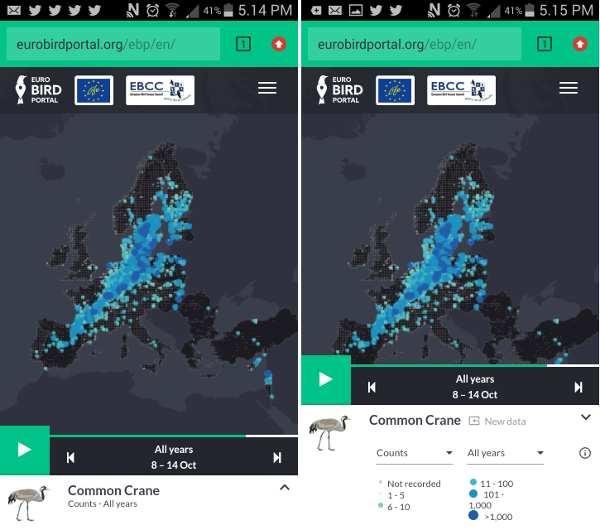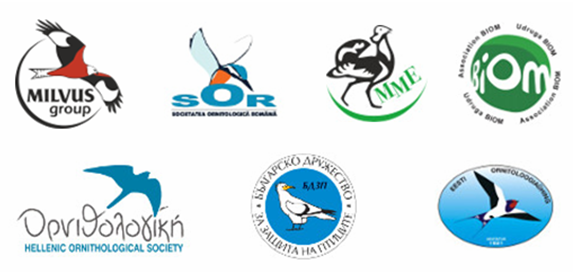August 29th, 2025
Local Observation.org portals launched in four countries of SE Europe
During April and May, official launch events for national Observation.org platforms were held in Albania, Bosnia and Herzegovina, Kosovo and Montenegro. The partners from these countries have decided to incorporate Observation.org as their official national platform for collecting bird data and have translated it into local languages. This development has been possible thanks to the LIFE22-PLP-ES-EBP reinforcement project and is an important first step towards making the data collection more accessible to wider public in these respective countries, enabling capacity building and growth within the ornithological network as well as increasing qualitative and quantitative data collection.
In Albania, the partner AOS (Albanian OrnithologicalSociety) held the launching event at Divjaka-Karavasta National Park. The event was attended by 31 students, along with staff from the Regional Administration for Protected Areas (RAPA) Fier. Participants had a chance to listen to a lecture where topics of citizen science, bird monitoring and importance of complete lists were stressed along with presenting the Observation as a national platform, followed by a guided field activity at the lagoon. This was a practical way of presenting the usage of the Observation app, and familiarizing participants with the app’s main features.
Center forthe Protection and Research of Birds (CZIP) in Montenegro organized the event at their office in Podgorica where representatives from the Public Enterprise for National Parks and the Environmental Protection Agency, both part of the Ministry of Ecology, Spatial Planning and Urbanism, were present. This enabled demonstrating the potential of the app for future biodiversity monitoring in Montenegro and emphasized its importance in the context of the country’s EU accession negotiations. So far, 149,567 observations have been collected through the Observation.org app in Montenegro, including 36,480 photos. Most importantly, 1,097 individual observers have contributed, and the number of observations, photos, and users continues to grow steadily.
Kosovo Ornithological Society (KOS) held the event that brought together representatives from several institutions, mainly from the NGO sector, who were introduced to the platform and its importance in advancing bird monitoring efforts in Kosovo. The presentation was well received, and participants expressed strong interest in contributing to this growing citizen science network.
Finally, "Naše Ptice“ (Bosnia and Herzegovina) held an on-line event with 17 participants, namely members of the society. During the event, they were introduced to the Observation.org webpage and the ObsMapp mobile application as well as importance of collecting complete species lists. In addition, information about the Observation.org portal and the methodology for collecting complete species lists was sent by email to 153 members of the Ornithological Society "Naše Ptice“ to encourage wider participation in this citizen science initiative. A practical field demonstration on using the ObsMapp application was organized for the members and volunteers of "Naše Ptice“ in Hutovo Blato Nature Park, connected to the weekend data collection challenge. This further enabled participants to practice real-time data entry, explore the app's functionalities, and learn how to document their observations effectively while contributing valuable data for the monitoring of bird populations in Bosnia and Herzegovina.
We wish the newly established national portals in SE Europe a long and fruitful contribution to the overall European bird data collection family.



































 .
.
































